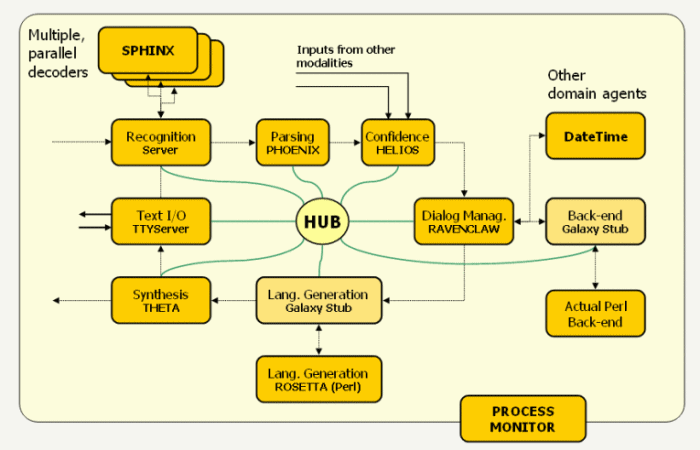
what is RavenClaw .
what is Olympus .
recent developments

|
|
what is RavenClaw .
what is Olympus .
recent developments
|
| Olympus | |||||||||||||||||||
| Olympus is a dialog system architecture, which has its roots in the earlier CMU Communicator architecture. It includes various components for speech recognition, language understanding, confidence annotation, language generation, speech synthesis, etc., which are connected together via the Galaxy message-passing communication infrastructure. |
|||||||||||||||||||
| Olympus Architecture / Components | |||||||||||||||||||
Olympus is a classical pipeline dialog system architecture (see the image below). The input from the user first passes through a speech recognizer, and then through a language understanding module. Based on the received semantic input, the dialog manager decides which action should be taken next. The dialog manager may also talk to one to several backend agents (e.g. database, etc). The output from the dialog manager is rendered as text by the language generation module, and then transformed into audio by a synthesis component.  The next image provides a more detailed view of the various system components.  The main components involved are:
These various components are connected via the Galaxy message-passing communication infrastructure. Galaxy uses a central hub and a set of rules for relaying messages from one component to the other. |